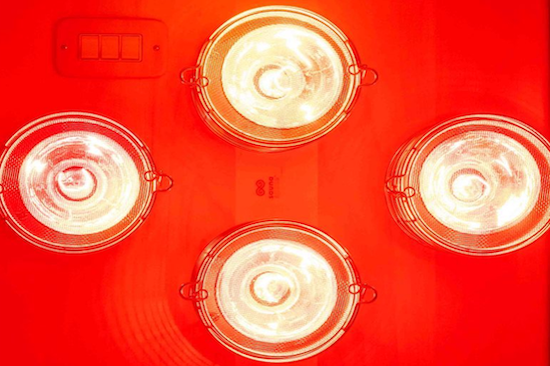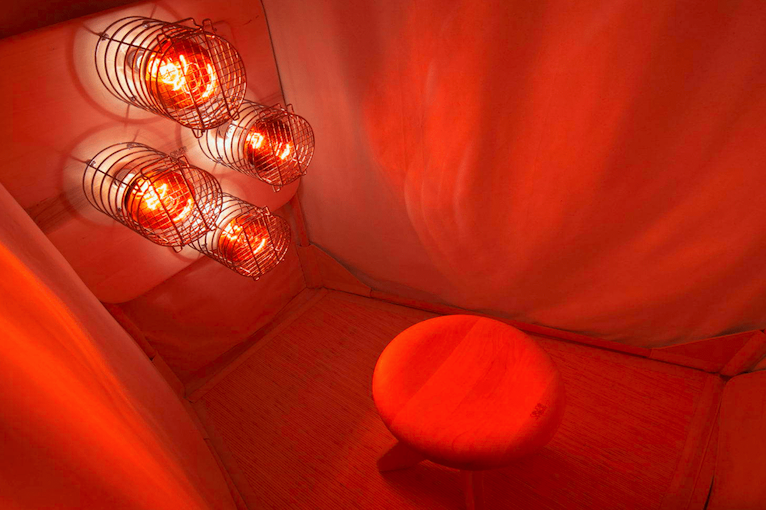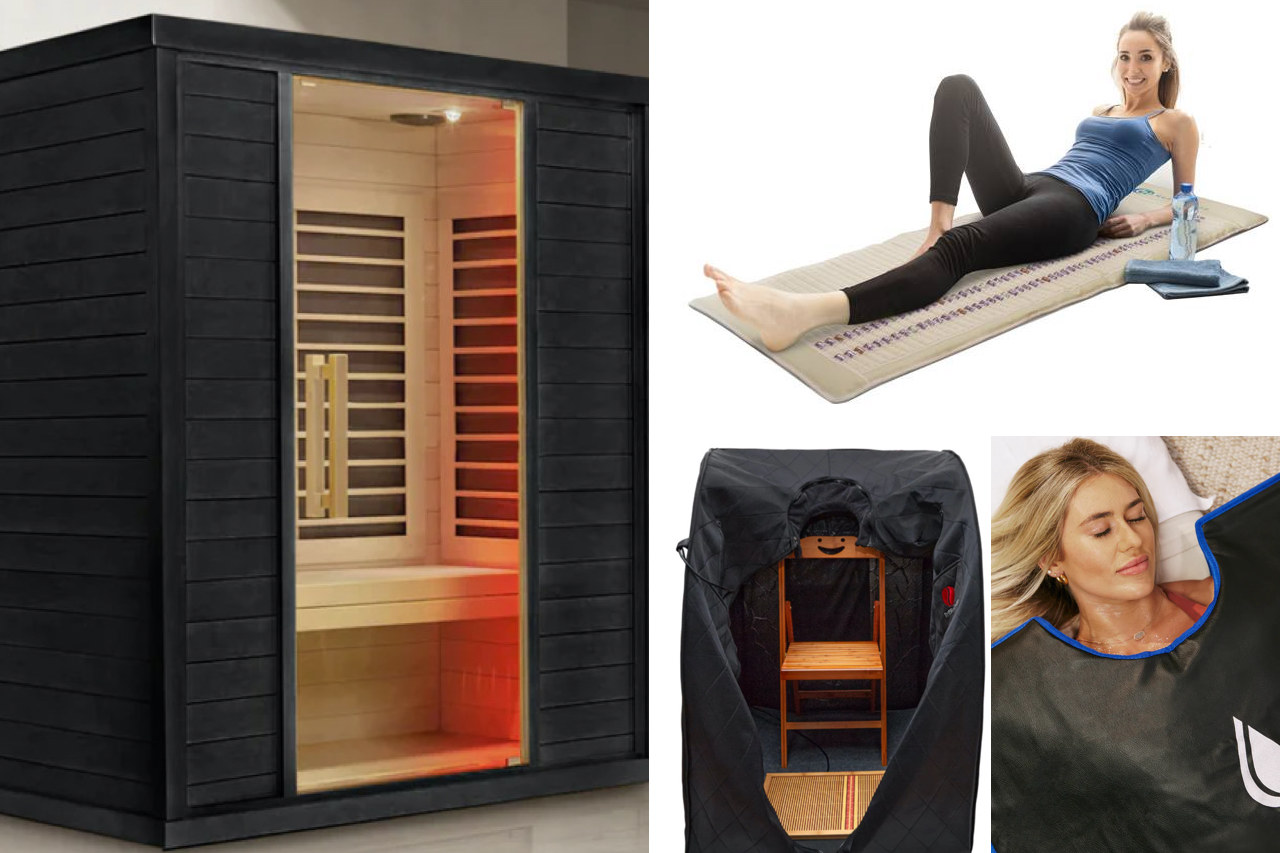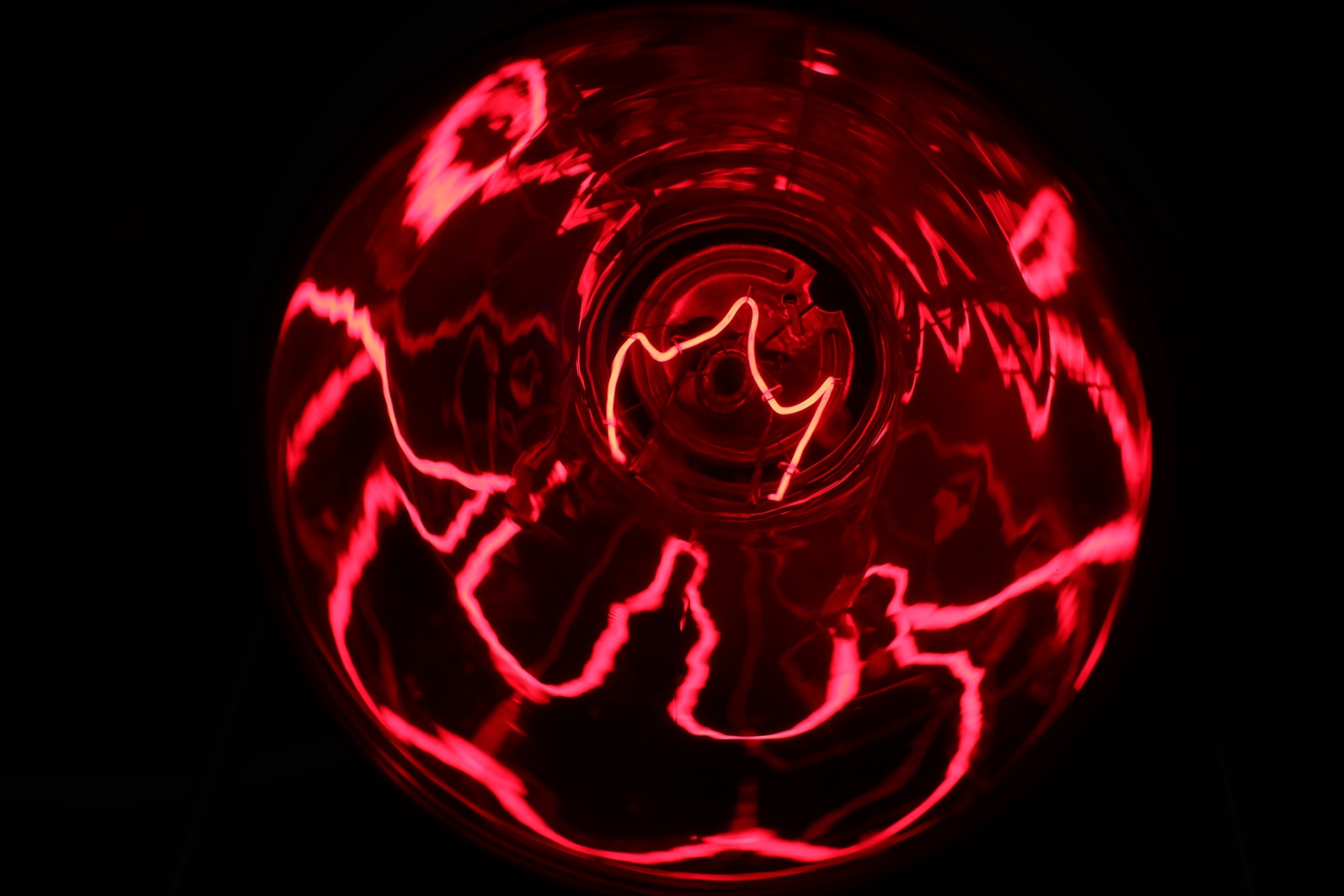- HOME
- Infrared Sauna Insights
- Near-Infrared
What Is Near Infrared Sauna?

The near infrared sauna is able to reach deep within our skin without the intense sensation of heat. This makes near infrared saunas an invaluable tool to improve skin health. But the near infrared sauna has more to offer.
Read along and learn more about the radiant facts of near infrared light, a spectrum of possibilities hidden just beyond the veil of visible red light.
A quick tour of the blogpost
NIR in the Spectrum
Near infrared radiation (NIR) is a segment of the electromagnetic spectrum that lies just beyond the visible light range. While visible light spans wavelengths from approximately 380 to 700 nanometers (nm),
NIR wavelengths start right after, from about 700 nm and extend up to around 1,300 nm. This places NIR in a unique position, bridging the gap between the visible light we can see and the longer wavelengths of mid-infrared radiation that we typically perceive as heat.
Within the infrared spectrum, NIR has the longest wavelenghts and produces the least heat.

(1000 nm is 1 micronmeter)
How Near Infrared Light effects Our Body
A study into the effects of NIR on the human body revealed the following insights. [1]
characteristics of NIR
Near infrared light (NIR) has the unique ability to pass through the skin and reach the layers just below it, known as the subcutaneous tissues. This includes not only the fat layers directly under the skin but also deeper tissues such as muscles and bones.
What makes NIR light special is its dual nature: it can act as waves, similar to ripples spreading across a pond, and as particles, tiny like dust specks. This dual nature allows NIR to have various effects on these deeper tissues.
It's also important to note that NIR is strongly absorbed by water, hemoglobin (found in our blood), and myoglobin (found in our muscles). Hemoglobin is crucial for carrying oxygen to our body tissues, while myoglobin helps store and deliver oxygen to our muscles during physical activity.
The deep penetration of NIR into the skin is a key factor in its effectiveness for therapeutic uses.
Skin Tissue
NIR offers our skin a therapeutic effect similar to a warm treatment, minus the sensation of heat. While NIR itself doesn't produce heat, it can gently warm the tissues, leading to increased blood flow. This enhanced circulation delivers more nutrients and oxygen to the tissues.
In our skin, NIR light plays a role in stimulating fibroblasts. These cells produce, among many others, two vital proteins: collagen and elastin. These proteins are the building blocks for repairing and fortifying damaged tissues.

Muscles
NIR light's deep penetration doesn't stop at the skin; it also has a profound impact on our muscles, triggering biochemical changes that promote muscle relaxation. It may reduce inflammation and modulate cellular functions, relieving muscle tension and discomfort.
Furthermore, the slight tissue warming increases blood flow, ensuring a richer supply of oxygen and nutrients to muscles.
BONE MARROW
While NIR's penetration into the body can have positive effects on bone marrow health by increasing blood flow and nutrient delivery, it's important to acknowledge that NIR exposure can also have concerning aspects.
The study suggests that NIR irradiation might possibly induce non-thermal DNA damage, including in bone marrow cells.
Stem Cells and Cellular DNA
NIR light's remarkable influence extends to the cellular level, particularly regarding stem cells and DNA. One of the most intriguing effects of NIR light is its ability to stimulate stem cells, which act as the body's natural repair crew. NIR exposure encourages these cells to multiply and become more active.
This boost in stem cell activity enhances the body's innate healing processes. This is particularly beneficial for wound healing and tissue regeneration.
Furthermore, NIR light's impact on cellular DNA is particularly notable during cell division. The energy from NIR can cause breaks in the DNA strands, leading to apoptosis (programmed cell death) in damaged or unwanted cells.
This selective action on dividing cells presents a promising avenue for therapeutic applications, especially in supporting tissue repair and regeneration.

NIR application
Building on the findings of this research, NIR emerges as particularly significant due to its ability to penetrate materials and biological tissues more effectively than visible light, without causing the surface-level skin damage often associated with UV exposure.
The deep penetration capability renders NIR indispensable in a wide array of applications, from medical imaging and therapeutic treatments to agricultural and industrial sensing technologies.
The Duality of NIR Effects
The study highlights the role of NIR in cellular healing and growth but also warns of its potential risks. Interestingly, over half of the sun's energy is near-infrared. Living things have evolved ways to protect themselves from it, showing that while NIR is important, it can also be harmful.
Excessive exposure of NIR weakens the skin's defenses, leading to wrinkles, reduced elasticity, and skin damage. Lighter skin tones face a higher risk, underscoring the need for moderation in NIR exposure.

Near infrared saunas
Reflecting on the comprehensive insights from the study, the application of NIR technology in saunas presents distinct potential benefits for users.
Targeted Deep Tissue Impact
NIR's unparalleled penetration beyond the skin's surface reaches muscles and even bone marrow. Which suggests that near infrared saunas could provide focused relief and aid healing deep within the body. This is particularly promising for alleviating muscle stiffness, deep tissue injuries, and joint pain.
Stimulation of Cellular Repair and Growth
NIR activates cellular repair and growth mechanisms. In near infrared saunas, this could mean faster recovery from muscle strains or skin injuries, as NIR stimulates the body's natural regenerative processes at the cellular level. It also increases apoptosis (cell death).
Skin Health and Elasticity
NIR boosts the production of collagen and elastin, essential for skin elasticity and firmness. Consequently, regular near infrared sauna use could enhance skin texture, diminish aging signs like wrinkles, and foster healthier skin.
A Balanced Approach
Near infrared saunas offer a range of benefits as supported by research. However, the outcomes of near infrared sauna usage can vary depending on factors such as frequency, individual health, and sauna design.
Taking a balanced approach is key to reaping the advantages of NIR saunas while ensuring your safety. The research mentioned overexposure as a potential risk but was focused on NIR effects in natural sunlight.
In near infrared saunas, exposure is controlled and short, usually only 10 minutes per day or a few times per week. This reduces the risks compared to long-term sun exposure.
So, while it is crucial to be aware of the potential risks, you should consider the specific context of using the NIR sauna, which offers a safer way to enjoy the benefits.

Why do I have to wear goggles in a near infrared Sauna?
In near infrared and full spectrum saunas, considering eye protection is important due to infrared radiation's potential impact on eye health. Although NIR levels in these saunas are generally low and considered safe, high intensity or prolonged exposure can be harmful to the eyes [2].
The IEC standards, such as IEC/EN 62471 [3], provide safety guidelines for light exposure, including NIR. These guidelines help to understand the safe limits of light exposure, which can be applied to saunas to minimize risks.
Manufacturers might include goggles with their saunas to offer an extra layer of comfort and protection, especially when there's intense light exposure. Following the manufacturer's recommendations and using goggles if it makes the sauna experience more comfortable is advisable, particularly in high-intensity light scenarios.
final thoughts
The role of NIR within the light spectrum unveils its unique attributes and it's an integral part of the full spectrum approach. NIR's ability to penetrate deep into skin tissues, stimulate cellular functions, and promote healing processes showcases its transformative power.
While near infrared sauna therapy extends beyond traditional sauna cabins, its versatility is evident in various forms, from portable devices to full-body treatments.
We invite you to explore a wealth of information and comprehensive reviews at saunace.com. From near-infrared sauna therapy to PEMF mats and sauna blankets, you’ll find everything you need to make informed choices and enhance your wellness routine.

Sam Everhart
Looking for more information? These articles might be of interest
References
1. Tanaka Y. Impact of near-infrared radiation in dermatology. World J Dermatol 2012, https://www.wjgnet.com/2218-6190/full/v1/i3/30.htm
2. Renesas, Eye Safety for Proximity Sensing Using Infrared Light-emitting Diodes, https://www.renesas.com/us/en/document/apn/an1737-eye-safety-proximity-sensing-using-infrared-light-emitting-diodes
3. International Electrotechnical Commission, IEC 62471, Photobiological safety of lamps and lamp systems, https://webstore.iec.ch/en/publication/7076


